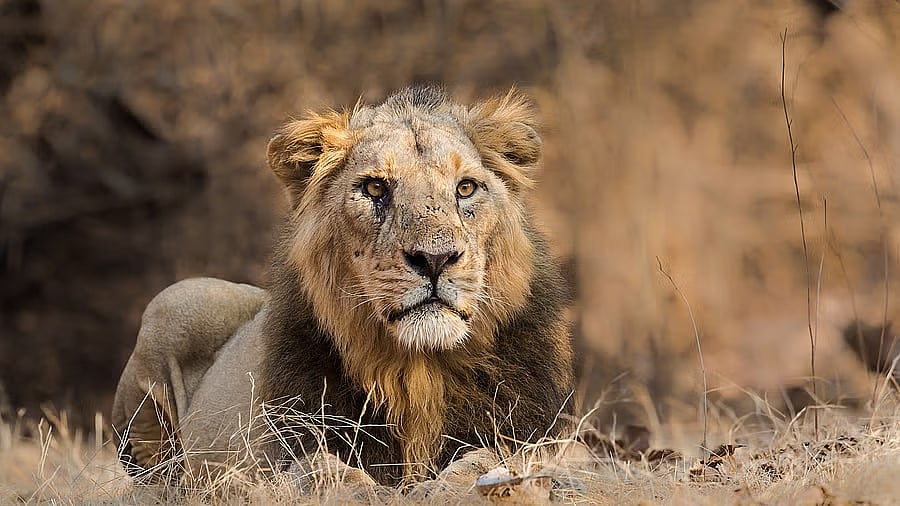
Representative image showing a male Asiatic lion.
Credit: iStock Photo
New Delhi: India houses 891 Asiatic lions in seven districts of Gujarat including the world famous Gir forest, says the latest lion census report released on Wednesday, marking a 32% rise since the last count five years ago.
The Asiatic lion population increased from 674 in 2020 to 891 in 2025 with an overall growth of 217 individuals.
While there are 394 lions in the source population in Gir forest (384) and Pania wildlife sanctuary (10), the number of the big cats in nine satellite populations extending up to the coast swells to 497 – a 49% growth when compared against the previous count carried out in 2020.
The most notable increases were observed among adult females, whose numbers rose from 260 to 330 in the last five years, as per the report released by the Gujarat government.
Prime Minister Narendra Modi expressed happiness at the rise in the population of lions and said 'Project Lion' helped create a conducive environment for the big cats and ensured their protection.
Reacting to Gujarat Chief Minister Bhupendra Patel's social media post on the number of lions being raised to 891, Modi said, "It is very encouraging information. It is heartening to note that the efforts under 'Project Lion' are providing them (lions) a conducive environment and ensuring their protection."
The spread of the area inhabited by the lions ballooned from 6,600 sq km (housing 284 lions) in 1990s to 35,000 sq km in 11 districts in 2025.
The current population estimate includes newly established satellite populations in Barda wildlife sanctuary near Porbandar, Jetpur and adjoining areas, and Babra-Jasdan areas, and some new corridors.
Other satellite zones are Mitiyala, Girnar, south western coast, south eastern coast, Savarkundla-Liliya and its adjoining areas of Amreli, Bhavnagar Mainland and Bhavnagar coast.
Amreli district holds the highest population of lions in Saurashtra (339 lions) followed by Gir-Somnath (222) and Junagadh (191). Out of the 11 districts surveyed, no lions were spotted in four.
Hunting and human encroachment caused the Asiatic lion population to plunge to just 20 by 1913 concentrated in Gir forests where they roam around in dry deciduous forests and open grasslands. Following years of concerted conservation efforts, the lion population has been rising steadily.
Even though wildlife biologists have been pointing out the risks to the Asiatic lion population because of their concentration in a single geography, there have been no efforts on the part of the Union government to move the animals to a second distant forest, despite having a Supreme Court order.
Kuno-Palpur grassland in Madhya Pradesh, originally selected as the second home for Asiatic lions, is currently housing a population of imported African cheetahs.
During the 16th round of lion census, there was a sighting of a pride of 20 lions at Sanjanpur Vidi in Palitana, Bhavnagar with two males, six females and 12 cubs.
The census drill was announced in March when the Prime Minister chaired the 7th National Board for Wildlife’s meeting. After training of the staff, the population estimation was carried out between May 10-13 following a two-step survey method.
